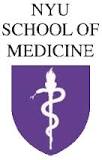TMS of Visual Working Memory
| Status: | Recruiting |
|---|---|
| Healthy: | No |
| Age Range: | 18 - 65 |
| Updated: | 7/14/2018 |
| Start Date: | November 2016 |
| End Date: | December 2018 |
| Contact: | Wayne Mackey |
| Email: | wem242@nyu.edu |
Transcranial Magnetic Stimulation of Visual Working Memory
The purpose of this study is to understand how the brain allows individuals to keep
information "in mind" over brief intervals. During the experiment, participants will be asked
to maintain fixation while they attend to and remember different visual stimuli (e.g., the
location of a dot on the screen, the color of a circle, the orientation of a line, the speed
of a group of moving dots) on a computer monitor. Participants will make decisions about
these visual stimuli and indicate their decisions by pressing buttons or making eye
movements. Through the use of Transcranial Magnetic Stimulation (TMS) investigators hope to
understand the contributions of different anatomical areas while subjects perform this task.
information "in mind" over brief intervals. During the experiment, participants will be asked
to maintain fixation while they attend to and remember different visual stimuli (e.g., the
location of a dot on the screen, the color of a circle, the orientation of a line, the speed
of a group of moving dots) on a computer monitor. Participants will make decisions about
these visual stimuli and indicate their decisions by pressing buttons or making eye
movements. Through the use of Transcranial Magnetic Stimulation (TMS) investigators hope to
understand the contributions of different anatomical areas while subjects perform this task.
This study will use a within subject design in which each participant will perform a working
memory task combined with Transcranial Magnetic Stimulation. TMS will be applied in three
possible procedures, 1) Online TMS, 2) Offline TMS and 3) Sham TMS. All subjects will be
given two trials within their one session, one of which will be sham TMS for all subjects and
another of which will be randomly assigned to either Online or Offline TMS. Trials order will
be randomly counterbalanced across subjects, who will be blind to the treatment of frontal
vs. sham TMS (independent variable). Participants will be randomized into either the online
or offline groups by computer generated lists to ensure equal numbers of participants in each
condition. Half of the subjects will receive online TMS (online group) and half will receive
offline TMS (offline group). Subjects will be randomly assigned to one of the two groups. The
dependent variables will be performance accuracy and reaction time on the working memory
task. By utilizing online and offline TMS, investigators will be able to explore whether
frontal cortex is involved transiently in visual working memory or persistently throughout
the task.
memory task combined with Transcranial Magnetic Stimulation. TMS will be applied in three
possible procedures, 1) Online TMS, 2) Offline TMS and 3) Sham TMS. All subjects will be
given two trials within their one session, one of which will be sham TMS for all subjects and
another of which will be randomly assigned to either Online or Offline TMS. Trials order will
be randomly counterbalanced across subjects, who will be blind to the treatment of frontal
vs. sham TMS (independent variable). Participants will be randomized into either the online
or offline groups by computer generated lists to ensure equal numbers of participants in each
condition. Half of the subjects will receive online TMS (online group) and half will receive
offline TMS (offline group). Subjects will be randomly assigned to one of the two groups. The
dependent variables will be performance accuracy and reaction time on the working memory
task. By utilizing online and offline TMS, investigators will be able to explore whether
frontal cortex is involved transiently in visual working memory or persistently throughout
the task.
Inclusion Criteria:
- Neurologically healthy individuals will be recruited.
Exclusion Criteria:
- Individuals with neurological issues (e.g., history of seizures, neurosurgery, brain
trauma) will be excluded.
- Women of childbearing potential will be told that although there are no known risks of
the procedure to the unborn fetus, they should not take part in the study if they are
or might be pregnant.
- Minors and the elderly will be excluded.
- Individuals who are on medications that heighten the risk of TMS adverse events will
be excluded.
We found this trial at
1
site
550 1st Ave
New York, New York 10016
New York, New York 10016
(212) 263-7300

Principal Investigator: Kartik Sreenivasan, MD
New York University School of Medicine NYU School of Medicine has a proud history that...
Click here to add this to my saved trials